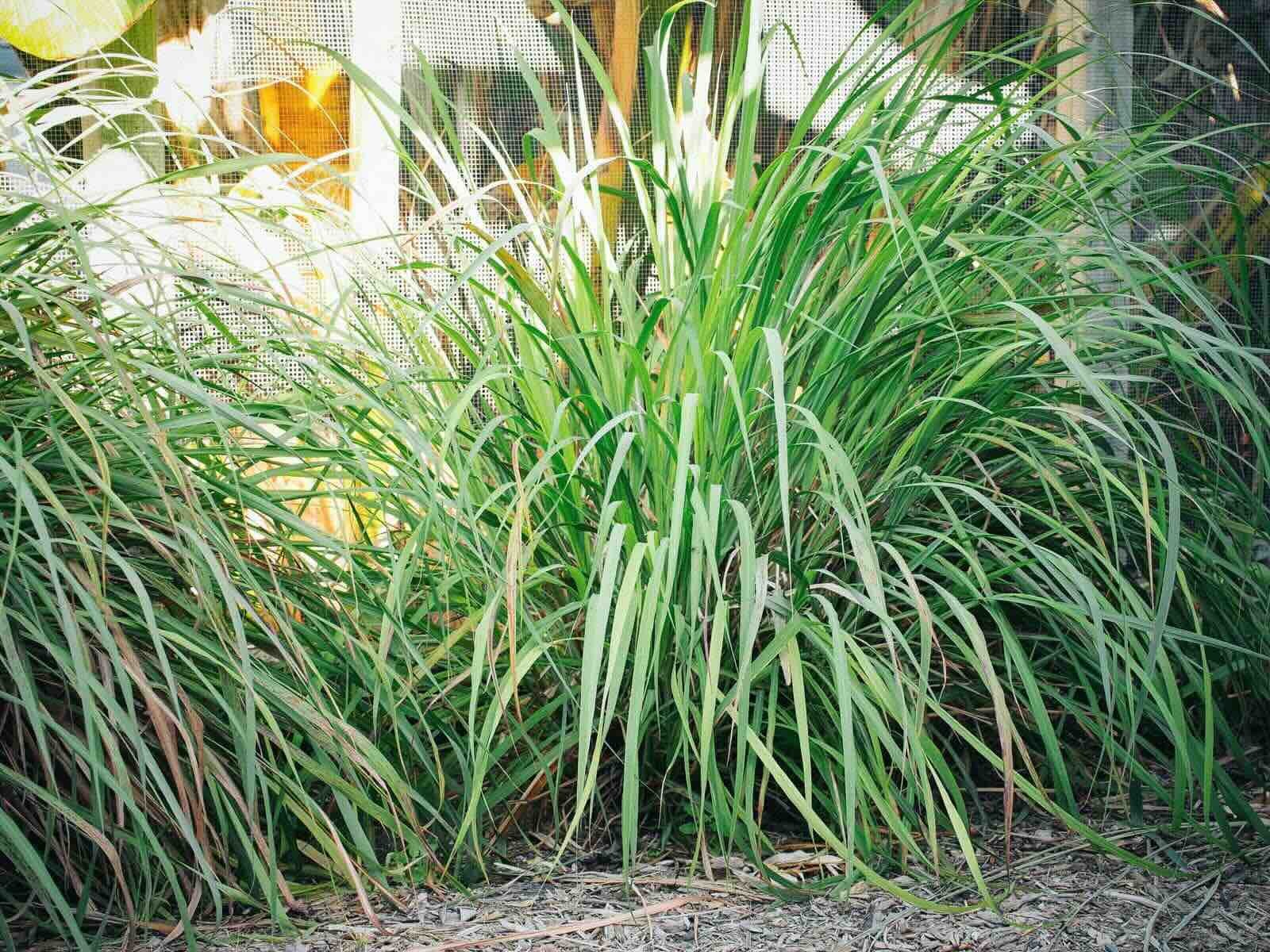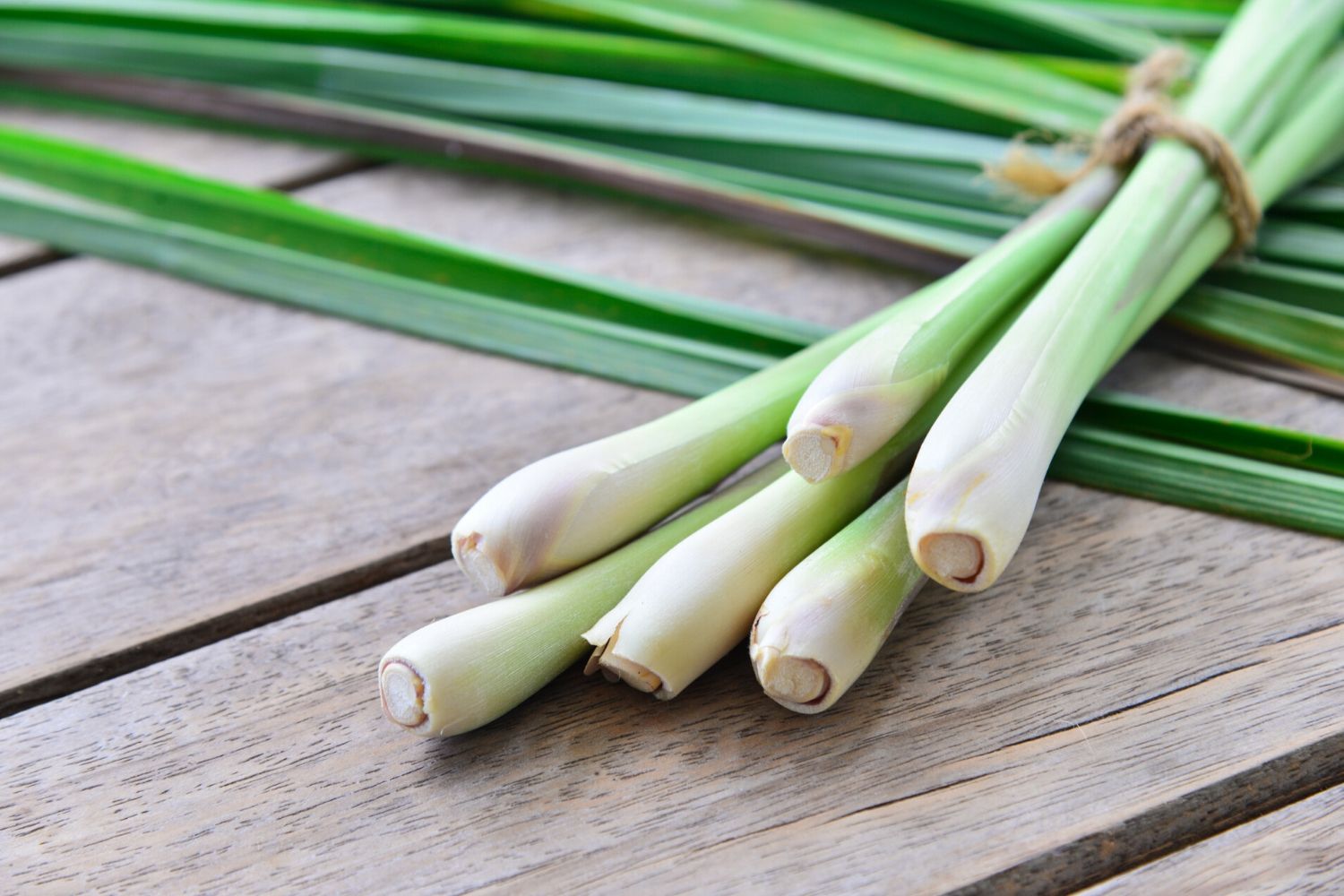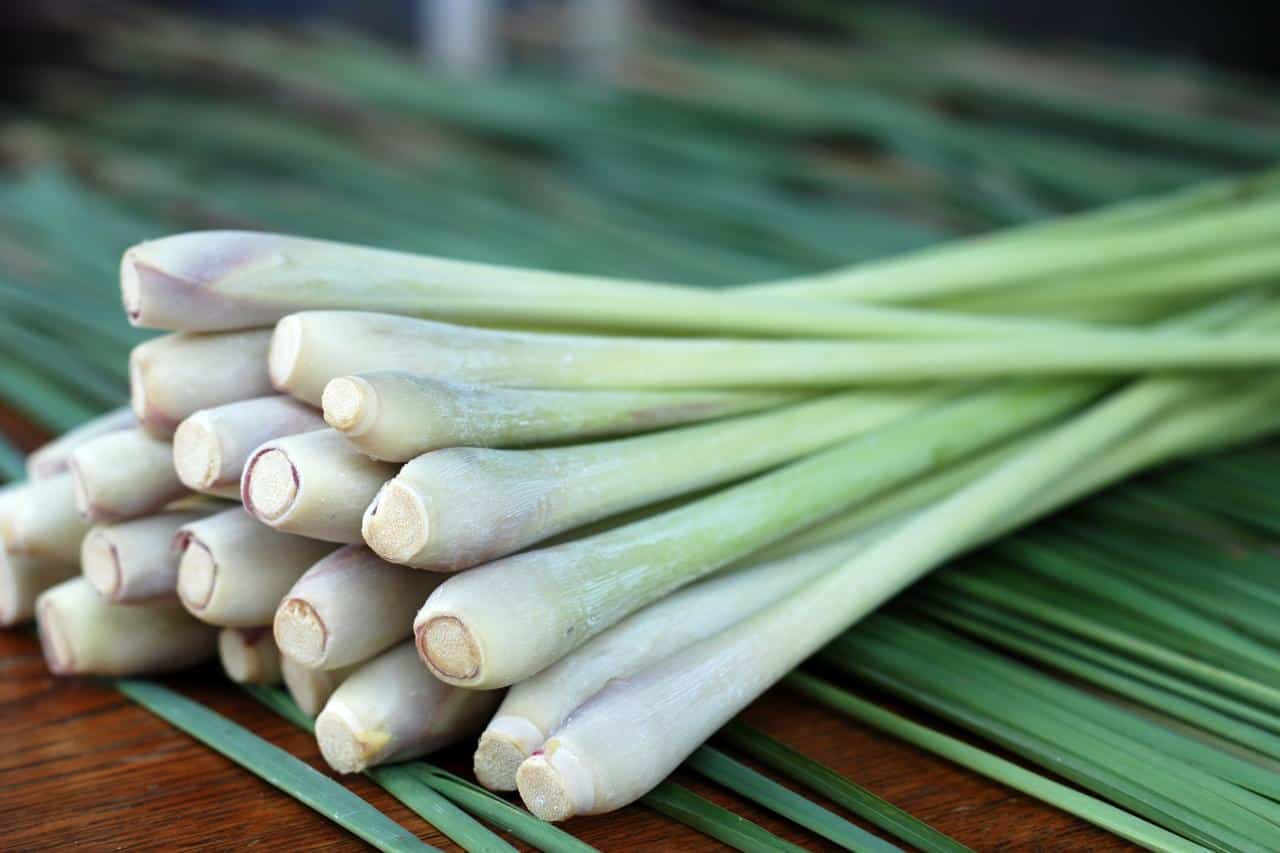Home>Gardening & Outdoor>Landscaping Ideas>How To Grow Lemongrass Plant


Landscaping Ideas
How To Grow Lemongrass Plant
Modified: August 17, 2024
Learn how to grow lemongrass plant in your garden with these landscaping ideas. Discover tips for planting, care, and maintenance.
(Many of the links in this article redirect to a specific reviewed product. Your purchase of these products through affiliate links helps to generate commission for Storables.com, at no extra cost. Learn more)
Introduction
Welcome to the wonderful world of growing lemongrass! Whether you're an avid gardener or just starting out, lemongrass is a fantastic addition to any garden. With its refreshing citrus scent and versatile culinary uses, lemongrass is a delightful herb that can thrive in various climates.
In this comprehensive guide, we'll explore the essential steps to successfully grow lemongrass, from choosing the right location to harvesting the fragrant stalks. By the end of this journey, you'll be equipped with the knowledge and confidence to cultivate this vibrant herb in your own outdoor space.
Lemongrass, scientifically known as Cymbopogon citratus, is native to tropical regions and belongs to the grass family, Poaceae. Its long, slender green leaves and thick, fibrous stalks are not only visually appealing but also offer a delightful lemony flavor, making it a popular ingredient in culinary dishes, teas, and fragrant oils.
Beyond its culinary and aromatic qualities, lemongrass possesses medicinal properties and is often used in traditional medicine to alleviate various ailments. Its essential oils are known for their antibacterial, antifungal, and anti-inflammatory properties, adding to the herb's allure and value.
So, whether you're aiming to elevate your culinary creations, infuse your garden with a refreshing aroma, or harness the herb's natural healing properties, growing lemongrass is a rewarding and enriching endeavor. Let's embark on this horticultural adventure and unlock the secrets to nurturing and harvesting this versatile and aromatic herb.
Key Takeaways:
- Lemongrass thrives in warm, sunny conditions and requires well-draining soil. Regular watering and strategic fertilization support robust growth and flavorful harvests.
- Pruning, harvesting, and pest management are essential for maintaining lemongrass health. Enjoy the therapeutic joys of gardening and savor the vibrant flavors of this remarkable herb.
Read more: How Tall Is Lemongrass
Choosing the Right Location
Before diving into the planting process, it’s crucial to select an optimal location for your lemongrass. This herb thrives in warm, humid conditions and requires ample sunlight to flourish. When choosing a spot in your garden or outdoor space, consider the following factors:
- Sunlight: Lemongrass is a sun-loving plant and requires at least six to eight hours of direct sunlight daily. Select a location with unobstructed access to sunlight, such as a south-facing area, to ensure optimal growth and robust stalk development.
- Climate: Lemongrass is best suited for tropical and subtropical climates, thriving in temperatures ranging from 70 to 85 degrees Fahrenheit (21 to 29 degrees Celsius). If you live in a region with cooler temperatures, consider growing lemongrass in containers that can be brought indoors during colder months.
- Soil Drainage: Ensure that the chosen location offers well-draining soil to prevent waterlogging, which can lead to root rot. If your soil has poor drainage, consider creating raised beds or incorporating organic matter to improve its structure.
- Protection from Wind: While lemongrass enjoys a breezy environment, it’s essential to shield the plant from strong, damaging winds. Select a location that provides some protection from intense gusts, especially if you live in a windy area.
By carefully considering these factors, you can create an ideal environment for your lemongrass to thrive. Once you’ve identified the perfect spot, you’ll be ready to prepare the soil and embark on the exciting journey of planting this aromatic herb.
Preparing the Soil
Creating a nutrient-rich and well-draining soil environment is essential for the successful cultivation of lemongrass. Before planting this aromatic herb, take the following steps to prepare the soil:
- Soil Composition: Lemongrass thrives in loamy, well-draining soil with a slightly acidic to neutral pH level (6.0 to 7.5). If your soil is heavy or compacted, consider amending it with organic matter such as compost, coconut coir, or well-rotted manure to improve its texture and drainage capabilities.
- Clear the Area: Remove any weeds, rocks, or debris from the chosen planting site to create a clean and unobstructed area for your lemongrass to grow. This will minimize competition for nutrients and ensure that the herb’s roots can establish themselves without impediments.
- Loosening the Soil: Use a garden fork or tiller to loosen the soil to a depth of about 12 to 15 inches (30 to 38 centimeters). This process aerates the soil, enhances drainage, and creates a favorable environment for the development of lemongrass roots.
- Incorporate Organic Matter: Mix in a generous amount of organic matter, such as compost or well-rotted manure, to enrich the soil with essential nutrients. This organic amendment promotes healthy root growth and provides a steady supply of nourishment for your lemongrass plants.
By diligently preparing the soil, you’ll lay the groundwork for robust and vigorous lemongrass growth. The enriched soil will support the herb’s nutritional needs and contribute to the development of flavorful and aromatic stalks. With the soil primed for planting, you’re ready to embark on the next step: introducing lemongrass to its new home in your garden.
Planting Lemongrass
Now that you’ve chosen the perfect location and prepared the soil, it’s time to embark on the exciting process of planting lemongrass. Follow these steps to ensure a successful and thriving start for your aromatic herb:
- Obtaining Lemongrass: Acquire lemongrass stalks or young plants from a reputable nursery or garden center. Alternatively, if you have access to mature lemongrass plants, you can propagate new ones by dividing the root clumps.
- Planting Depth: When planting lemongrass, ensure that the crown of the plant, where the leaves emerge from the stalk, is positioned at or slightly above the soil level. This helps prevent water from pooling around the crown and minimizes the risk of rot.
- Spacing: Space lemongrass plants at least 24 to 36 inches (61 to 91 centimeters) apart to allow ample room for growth and to prevent overcrowding. This spacing also facilitates airflow around the plants, reducing the risk of moisture-related diseases.
- Watering: After planting, water the lemongrass thoroughly to settle the soil around the roots. Maintain regular watering to keep the soil consistently moist, but not waterlogged, during the initial establishment period.
- Container Planting: If you’re growing lemongrass in containers, select pots with adequate drainage holes to prevent water accumulation. Use a high-quality potting mix that offers excellent drainage and place the containers in a sunny location.
By following these planting guidelines, you’ll provide your lemongrass with a favorable environment to establish itself and thrive. Whether you’re planting directly in the ground or in containers, attentive care during the initial stages sets the stage for robust and aromatic growth. With your lemongrass now in place, the next steps involve nurturing and supporting its development through watering and fertilization.
To grow lemongrass, plant it in well-draining soil in a sunny spot. Water regularly and fertilize every few weeks. Trim the leaves to encourage new growth.
Watering and Fertilizing
Proper watering and fertilization are essential aspects of nurturing healthy and aromatic lemongrass plants. By following these guidelines, you can support robust growth and ensure a bountiful harvest of flavorful stalks:
- Watering: Lemongrass thrives in consistently moist soil, so it’s important to water the plants regularly, especially during dry periods. Aim to keep the soil evenly moist, but not waterlogged, to support healthy growth. When watering, focus on the base of the plants to deliver moisture directly to the roots.
- Deep Watering: To encourage strong root development, practice deep watering by allowing the soil to become thoroughly moistened during each watering session. This promotes deep root growth and enhances the plant’s ability to withstand drought conditions.
- Fertilization: Apply a balanced, slow-release fertilizer to your lemongrass plants in early spring, following the manufacturer’s recommendations for application rates. Alternatively, you can use a liquid fertilizer diluted to half strength and apply it every four to six weeks during the growing season to provide a steady supply of nutrients.
- Organic Fertilizers: If you prefer organic options, consider using compost, well-rotted manure, or organic plant-based fertilizers to nourish your lemongrass. These natural fertilizers enrich the soil, promote beneficial microbial activity, and contribute to the overall health of the plants.
- Container Care: When growing lemongrass in containers, be attentive to the moisture levels in the soil, as pots tend to dry out more quickly than garden beds. Adjust your watering frequency as needed to maintain consistent moisture, and fertilize container-grown lemongrass according to the same guidelines as plants in the ground.
By providing adequate water and essential nutrients, you’ll empower your lemongrass plants to thrive and yield an abundance of aromatic stalks. Consistent watering and strategic fertilization contribute to the overall health and vitality of the plants, ensuring a rewarding and flavorful harvest. As your lemongrass flourishes, it’s important to implement proper pruning and harvesting techniques to maintain its vigor and productivity.
Read more: How To Preserve Lemongrass
Pruning and Harvesting
Pruning and harvesting are integral practices that contribute to the health, vigor, and productivity of lemongrass plants. By following these guidelines, you can ensure the continuous growth of flavorful stalks and maintain the overall well-being of your lemongrass:
- Pruning: Regular pruning helps keep lemongrass plants tidy and encourages the development of fresh, tender stalks. Use sharp garden shears to trim away any yellowing or damaged leaves, cutting them off at the base of the plant. Additionally, remove any spent flower stalks to redirect the plant’s energy towards producing flavorful foliage.
- Division: Over time, lemongrass clumps can become dense, hindering the growth of individual plants. To promote healthier growth and maximize productivity, consider dividing mature clumps every few years. Carefully dig up the clump and separate it into smaller sections, ensuring that each division has a good portion of roots and healthy growth points.
- Harvesting: Harvest lemongrass stalks when they reach a suitable size, typically around 1/2 to 3/4 inch (1.3 to 1.9 centimeters) in diameter. Use a sharp knife or garden shears to cut the stalks at the base, just above ground level. Selectively harvest the outer stalks, allowing the inner ones to continue growing and replenishing the plant.
- Harvest Frequency: You can harvest lemongrass stalks as needed throughout the growing season. Regular harvesting not only provides fresh stalks for culinary use but also stimulates the plant to produce new growth, resulting in a continuous supply of tender and aromatic foliage.
- Storage: Store harvested lemongrass stalks in the refrigerator for several weeks, or freeze them for longer-term preservation. Alternatively, you can dry the stalks and store them in an airtight container, preserving their flavor and fragrance for use in teas, culinary dishes, and aromatic infusions.
By incorporating these pruning and harvesting practices, you’ll foster the ongoing vitality of your lemongrass plants and enjoy a steady supply of fresh, aromatic stalks. These techniques not only contribute to the plant’s health but also offer an abundance of flavorful and fragrant harvests. As you tend to your lemongrass, it’s essential to remain vigilant against potential pests and diseases that may threaten its well-being.
Pests and Diseases
While lemongrass is a resilient and low-maintenance herb, it is susceptible to certain pests and diseases that can hinder its growth and productivity. By staying vigilant and implementing preventive measures, you can safeguard your lemongrass plants and maintain their health. Here are some common pests and diseases to watch out for, along with effective management strategies:
- Aphids: These small, soft-bodied insects can cluster on the tender foliage of lemongrass, sucking sap and causing leaf distortion. To control aphids, gently spray the affected plants with a strong jet of water to dislodge the pests. Alternatively, introduce natural predators such as ladybugs or lacewings to help manage the aphid population.
- Spider Mites: These tiny arachnids can infest lemongrass, causing stippling and discoloration of the leaves. Regularly misting the plants with water can create a less hospitable environment for spider mites. Additionally, predatory mites can be introduced to control the population of these pests.
- Fungal Diseases: Lemongrass is susceptible to fungal infections such as leaf blight and rust, especially in humid conditions. To prevent fungal diseases, ensure proper air circulation around the plants by spacing them adequately. Avoid overhead watering, as wet foliage can promote fungal growth. If fungal issues arise, apply a suitable fungicidal spray according to the manufacturer’s recommendations.
- Grasshoppers and Caterpillars: These voracious feeders can consume lemongrass foliage, leading to extensive damage. Physical removal of these pests and the use of protective barriers, such as fine mesh netting, can help prevent infestations. Additionally, organic insecticidal soaps or neem oil can be used to manage these pests effectively.
- Root Rot: Excessive moisture or poorly drained soil can lead to root rot, causing the plant’s roots to decay. To prevent this, ensure that the soil has good drainage and avoid overwatering. If root rot is suspected, carefully inspect the roots and trim away any affected areas before replanting in well-draining soil.
By remaining attentive to the signs of pest infestations and diseases, you can promptly address any issues and protect the well-being of your lemongrass plants. Regular monitoring, proper cultural practices, and timely interventions are key to maintaining healthy and thriving plants. With these preventive measures in place, you can enjoy the aromatic beauty and culinary delights that lemongrass has to offer.
Conclusion
Congratulations on embarking on the enriching journey of growing lemongrass! As you’ve discovered, this aromatic herb offers a myriad of culinary, aromatic, and medicinal benefits, making it a valuable addition to any garden. By following the comprehensive guide outlined here, you’ve gained the knowledge and insights needed to cultivate vibrant and flavorful lemongrass plants with confidence and success.
From selecting the ideal location and preparing nutrient-rich soil to planting, watering, and nurturing your lemongrass, each step plays a crucial role in fostering the health and abundance of this versatile herb. By providing ample sunlight, consistent moisture, and essential nutrients, you’ve laid the foundation for robust growth and aromatic harvests.
Through attentive pruning, harvesting, and vigilant pest management, you’ll continue to support the well-being of your lemongrass plants, ensuring a continuous supply of fresh, tender stalks for culinary creations, teas, and aromatic infusions. The rewards of your efforts will extend far beyond the garden, enriching your culinary experiences and infusing your surroundings with the refreshing fragrance of lemongrass.
As you tend to your lemongrass plants, remember to savor the journey and embrace the therapeutic joys of gardening. Whether you’re a seasoned gardener or a novice enthusiast, the art of cultivating lemongrass offers a delightful blend of sensory pleasures and horticultural fulfillment.
So, as you nurture your lemongrass with care and dedication, may your garden be infused with the invigorating essence of this remarkable herb, and may your culinary creations be elevated by its vibrant flavors. With each harvest, may you be reminded of the boundless joys and bountiful rewards that come from cultivating nature’s gifts.
Thank you for joining us on this aromatic odyssey, and may your lemongrass journey be filled with abundance, vitality, and the aromatic splendor of nature’s bountiful offerings.
Frequently Asked Questions about How To Grow Lemongrass Plant
Was this page helpful?
At Storables.com, we guarantee accurate and reliable information. Our content, validated by Expert Board Contributors, is crafted following stringent Editorial Policies. We're committed to providing you with well-researched, expert-backed insights for all your informational needs.















0 thoughts on “How To Grow Lemongrass Plant”